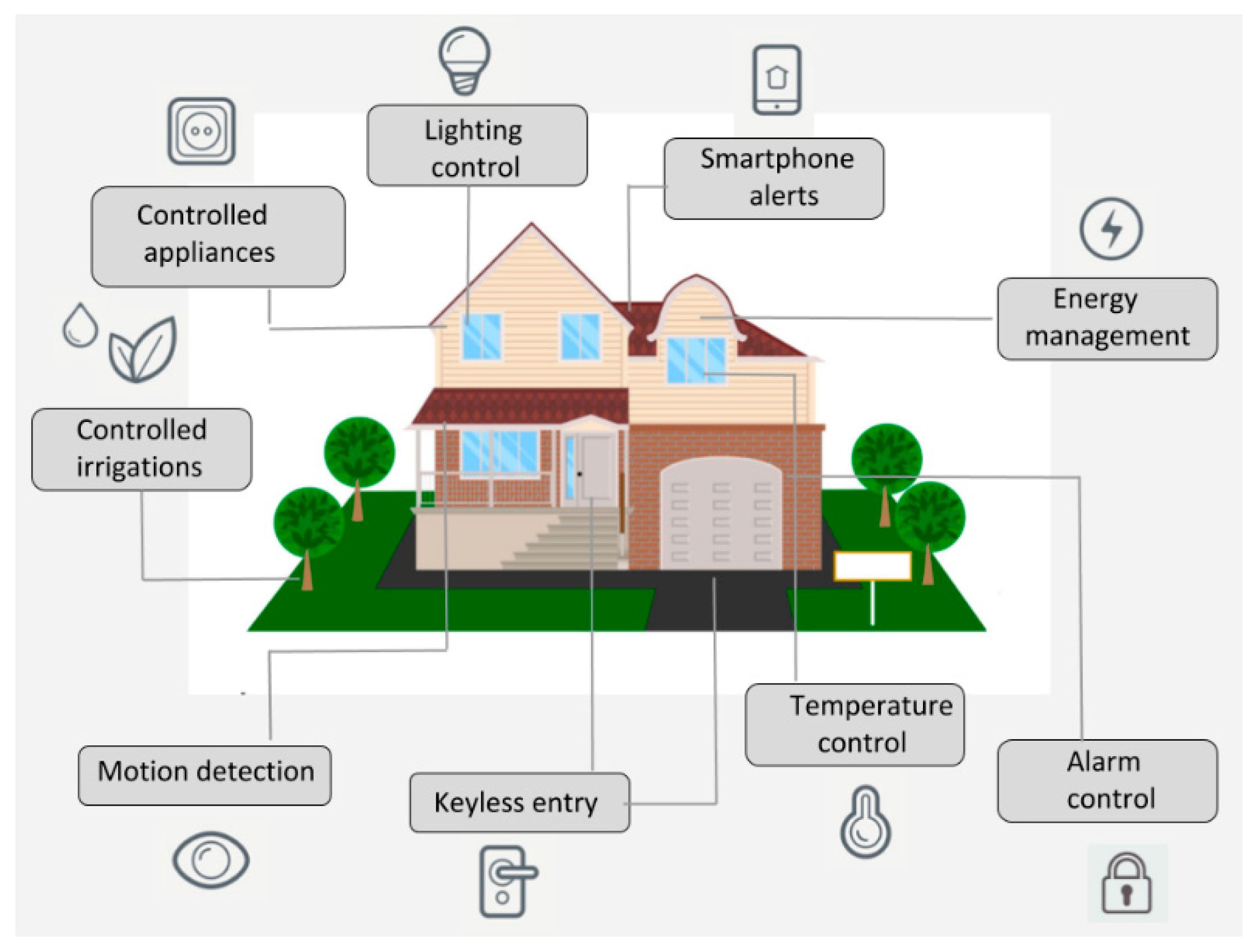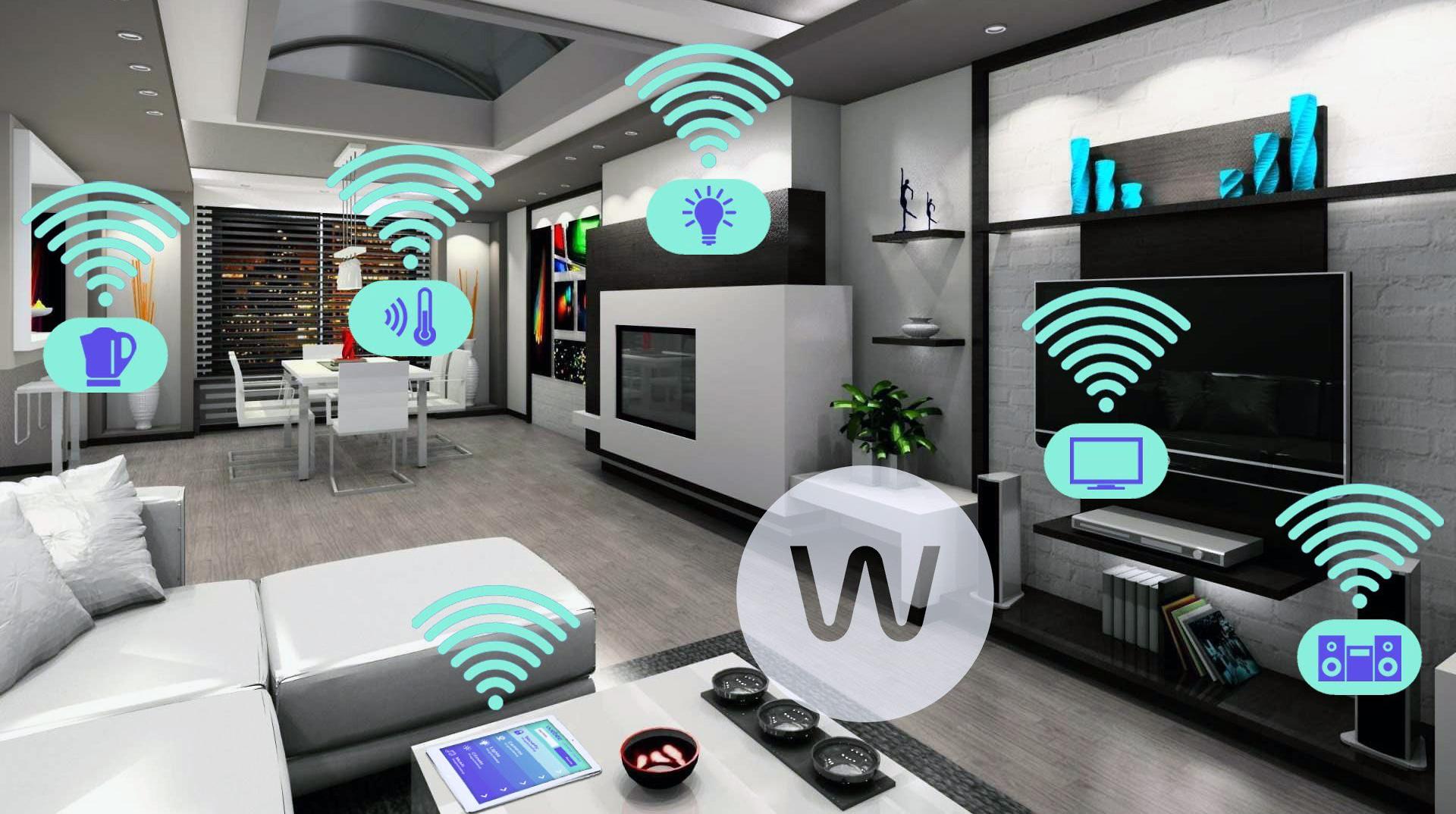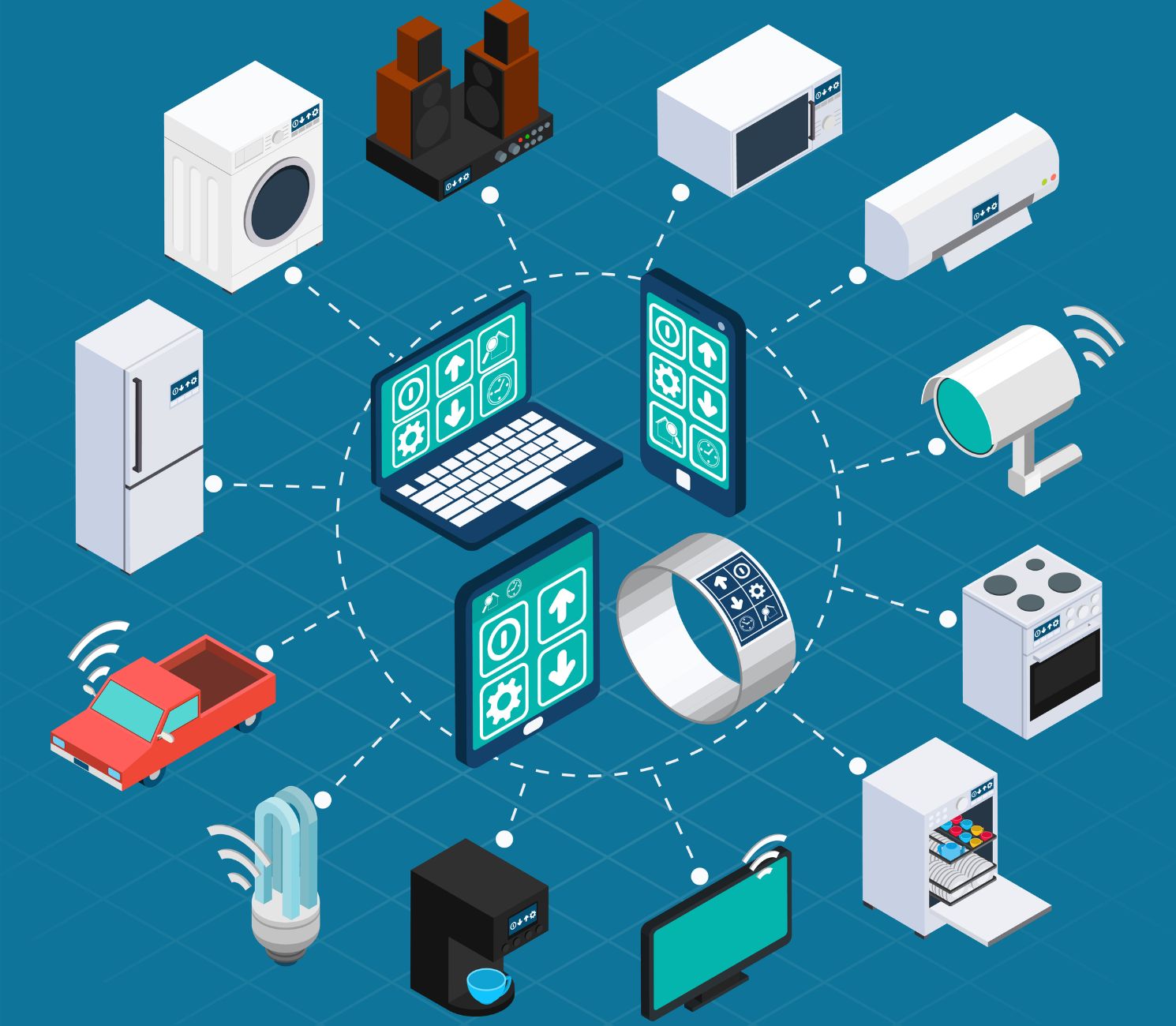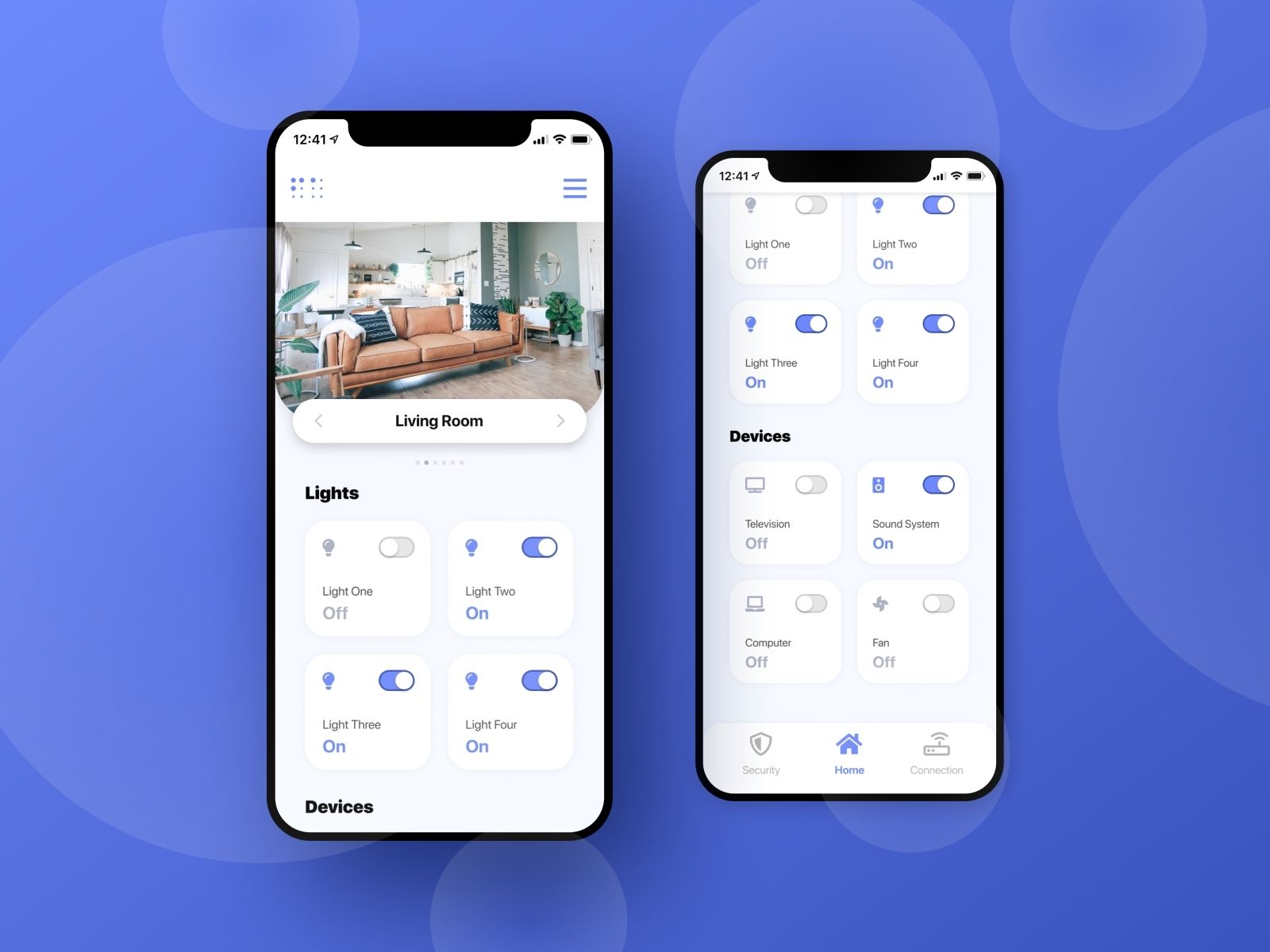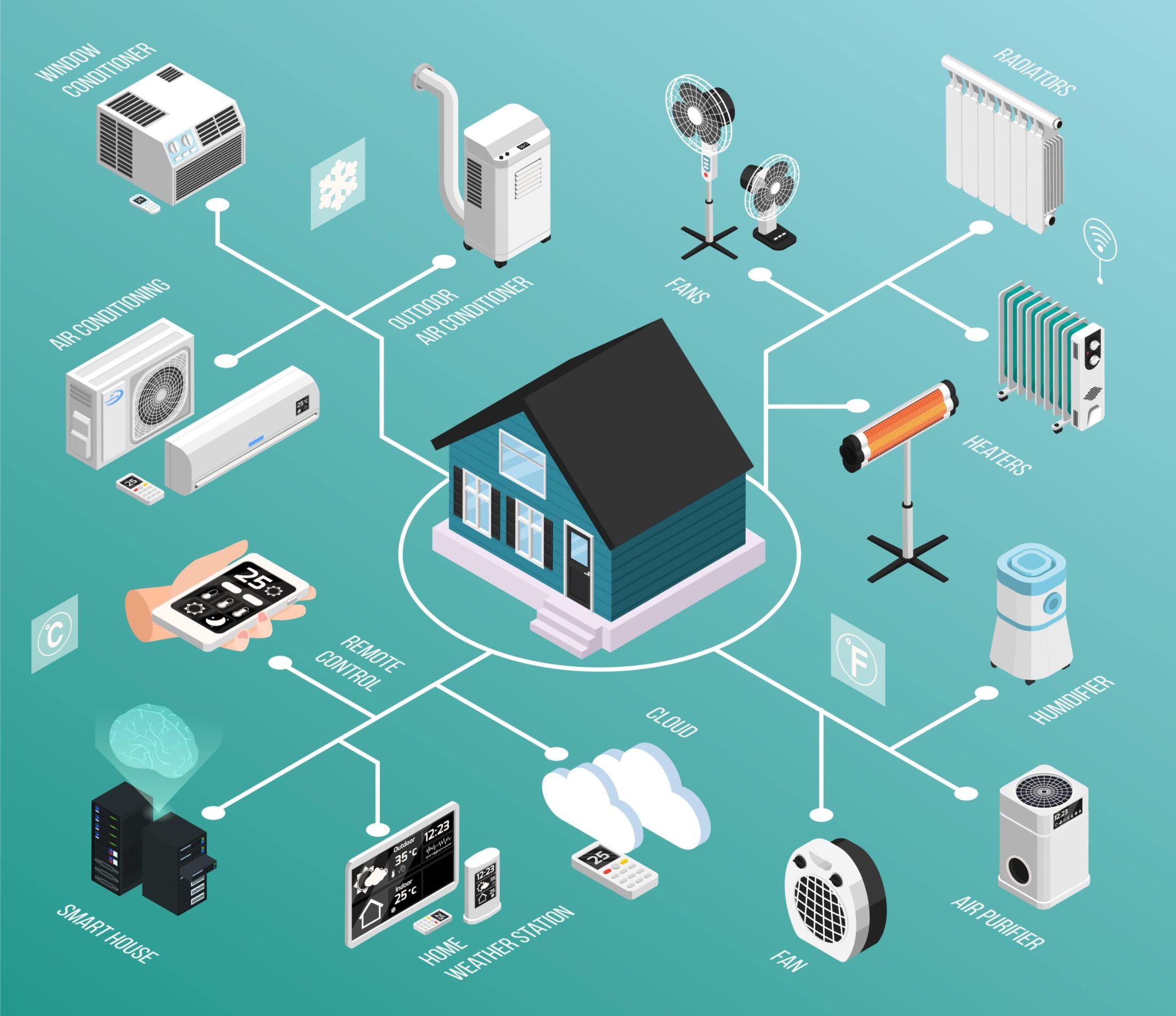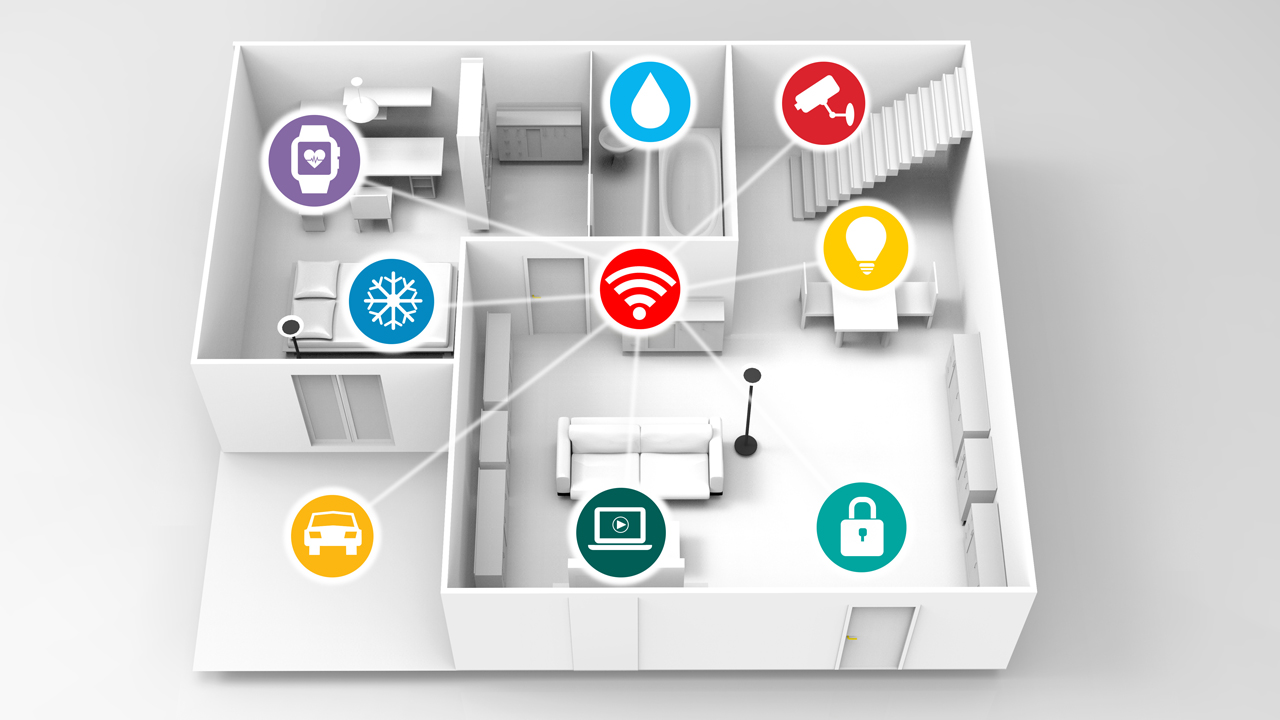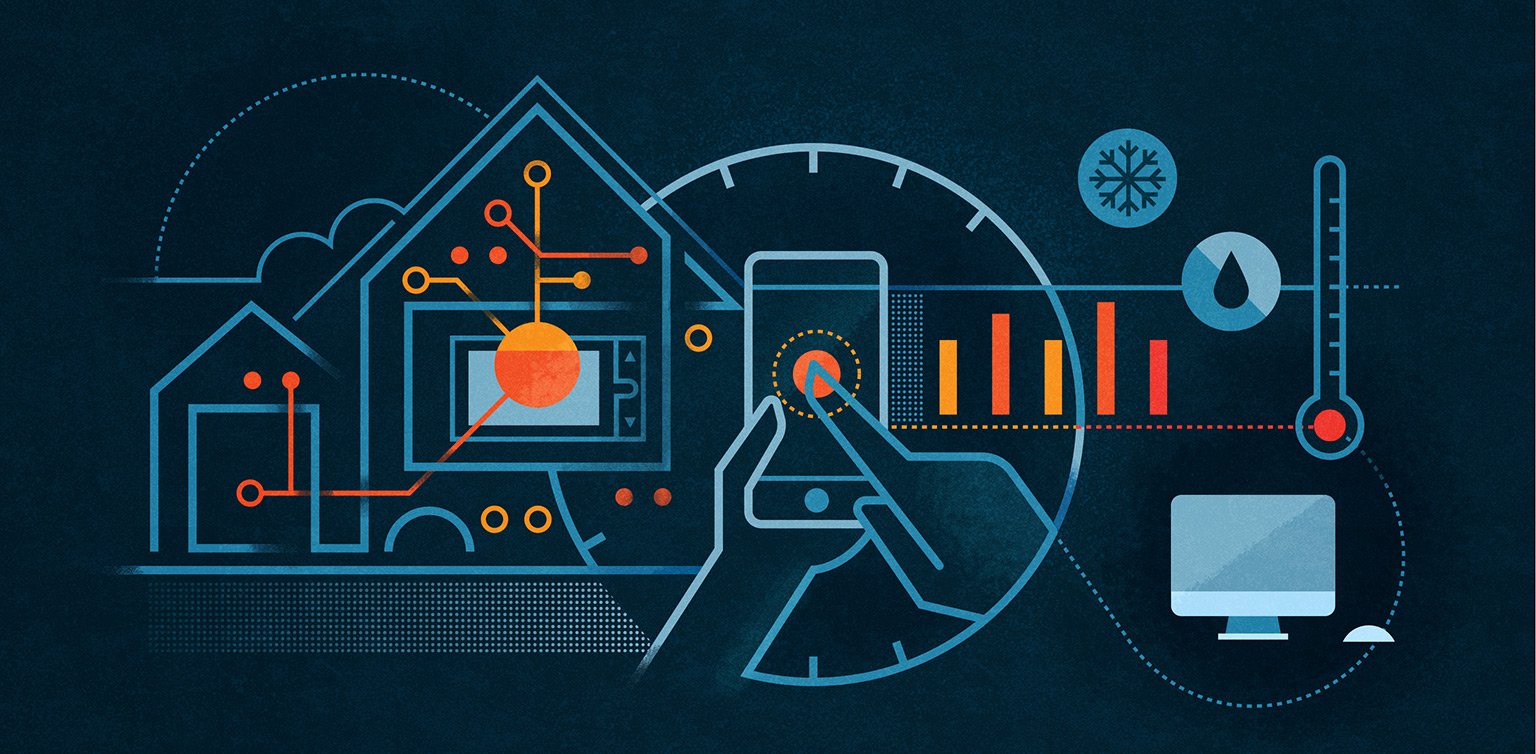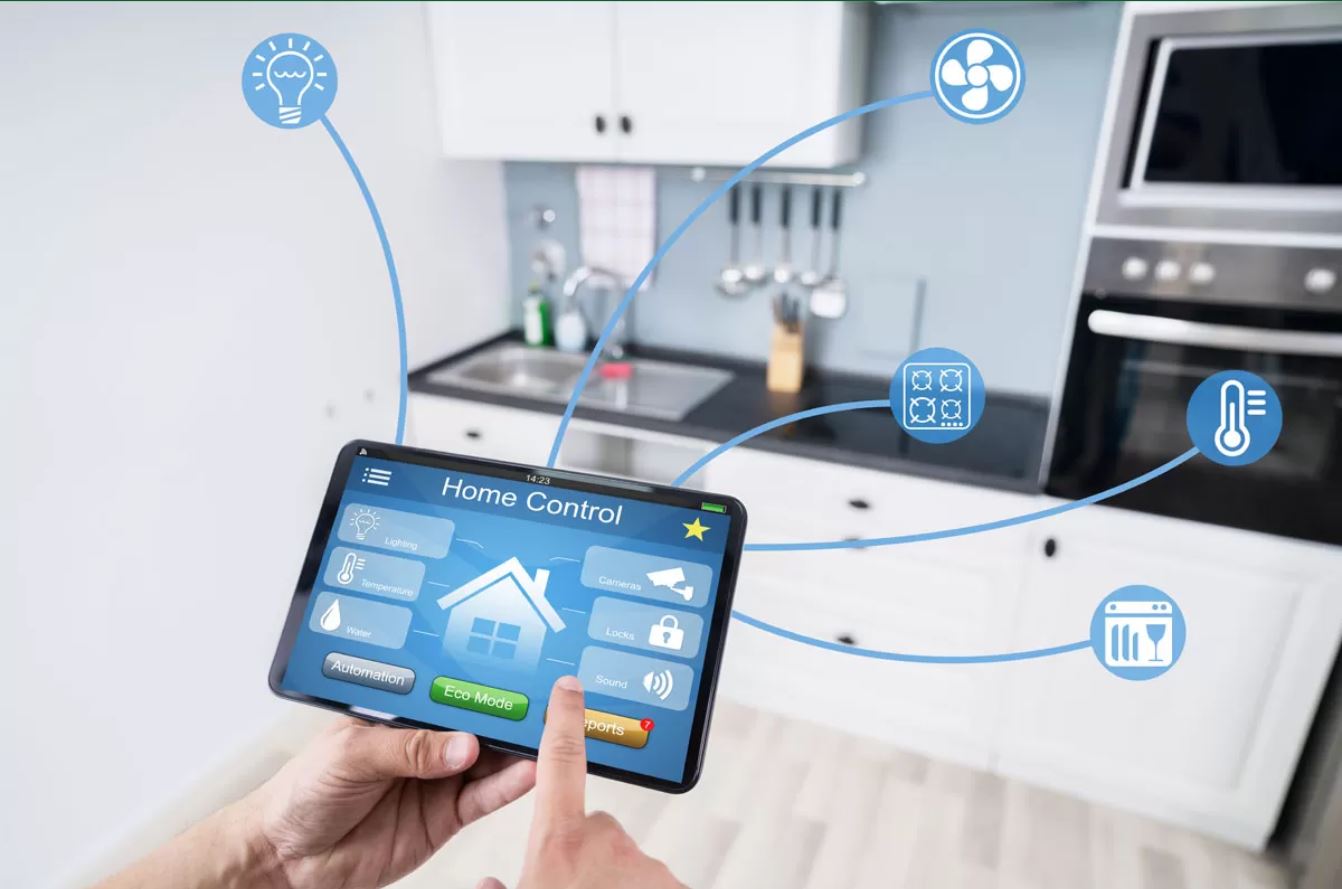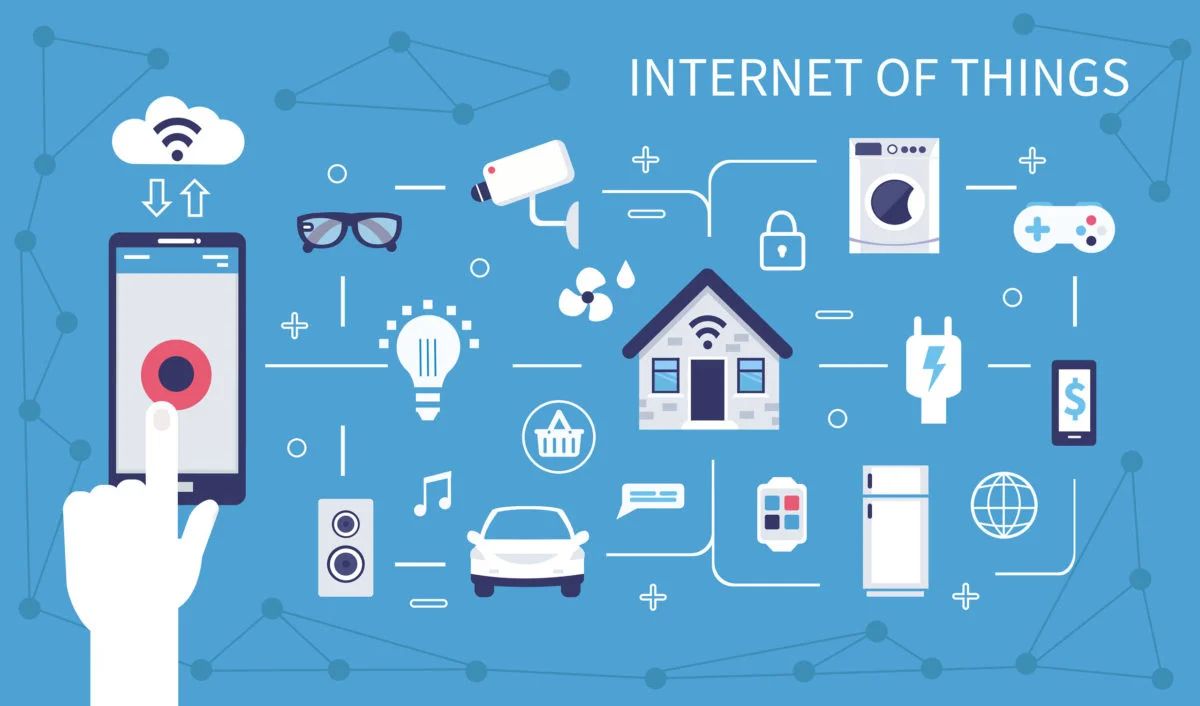Introduction
The Internet of Things (IoT) has revolutionized the way we live, connecting everyday devices to the internet and enabling them to communicate with each other. This technology has found its way into our homes, transforming them into smart, interconnected spaces that provide a wide range of functionalities. IoT home appliances offer homeowners a new level of convenience, control, and efficiency, making our lives easier and more comfortable.
Imagine coming home after a long day at work and having your lights turn on automatically, your favorite music playing softly in the background, and your thermostat set to the perfect temperature. With IoT technology, this is not just a dream, but a reality. Homeowners can now enjoy a more convenient and personalized living experience.
But the benefits of IoT home appliances don’t stop at convenience. They also offer homeowners the ability to monitor and manage their energy consumption, enhancing efficiency and reducing costs. With real-time data and intelligent algorithms, these appliances can optimize energy usage and help homeowners make more informed decisions.
In addition to convenience and energy efficiency, IoT home appliances provide homeowners with enhanced safety and security features. From smart locks and security cameras to smoke detectors and leak sensors, these appliances can keep our homes and loved ones protected. We can receive instant notifications on our smartphones if there is any unusual activity or potential dangers, giving us peace of mind even when we’re away.
Convenience and Control
One of the primary benefits of IoT home appliances is the enhanced convenience and control they offer homeowners. We no longer have to manually operate our devices, as they can be easily controlled through mobile applications or voice commands.
Imagine being able to turn on your coffee maker or preheat your oven without even getting out of bed. With IoT-enabled appliances, this level of convenience is within reach. We can create automated schedules or adjust settings remotely, ensuring that our appliances are ready and working exactly when we need them.
IoT home appliances also provide homeowners with the ability to create personalized settings and preferences. For example, we can customize lighting levels, temperature settings, or even the strength of our morning coffee, all according to our individual preferences.
Moreover, IoT technology enables seamless integration between different devices. This means that our appliances can communicate and work in sync with each other. For instance, when we leave the house, our smart thermostat can communicate with our smart security system to adjust the temperature and activate security measures automatically.
Additionally, IoT home appliances can learn from our habits and behaviors to provide a more tailored experience. They can analyze data and make adjustments based on our preferences, creating a truly personalized and intuitive living environment.
Overall, the convenience and control provided by IoT home appliances empower homeowners to manage their homes effortlessly and efficiently. We have the freedom to create our own smart home ecosystem that adapts to our needs and desires, making our lives more comfortable and enjoyable.
Energy Monitoring and Efficiency
Another significant advantage of IoT home appliances is their ability to monitor and optimize energy consumption, leading to improved efficiency and cost savings. These appliances are equipped with sensors and advanced algorithms that provide real-time information about energy usage and offer insights on how to reduce wastage.
With IoT technology, homeowners can gain a better understanding of their energy consumption patterns. They can track usage data for different appliances and identify areas where energy is being wasted or used inefficiently. By having this visibility, homeowners can make informed decisions to minimize energy waste and reduce their carbon footprint.
IoT home appliances also enable intelligent automation that optimizes energy usage. For example, smart thermostats can learn from our behavior and automatically adjust the temperature based on occupancy and preferences. They can detect when we are away from home and adjust the settings to save energy, and then resume to our preferred temperature when we return.
In addition to automation, IoT appliances can also provide personalized energy-saving recommendations. They can suggest energy-efficient settings or offer tips on how to conserve energy. For instance, a smart lighting system can notify homeowners if lights are left on in unoccupied rooms, helping to reduce unnecessary energy consumption.
Furthermore, IoT home appliances can take advantage of renewable energy sources. They can monitor solar panel production and match the energy consumption with the availability of solar power. This not only reduces dependency on traditional energy grids but also promotes sustainable living.
By incorporating IoT home appliances into our households, we can make significant progress towards energy efficiency and contribute to a greener future. These appliances provide the tools and insights needed to reduce energy waste, lower electricity bills, and make a positive environmental impact.
Safety and Security
When it comes to our homes, safety and security are of utmost importance. IoT home appliances play a crucial role in enhancing the safety and security of our living spaces, providing homeowners with peace of mind and protection.
One of the primary ways IoT appliances contribute to safety is through smart security systems. These systems can include features such as smart locks, video doorbells, and security cameras. With IoT technology, homeowners can remotely monitor their homes and receive real-time notifications when any unusual activity is detected. This enables us to take immediate action and notify authorities if necessary, even when we’re not physically present at home.
In addition to security systems, IoT home appliances offer safety features that can prevent accidents and potential hazards. For example, smart smoke detectors can detect smoke or fire and send alerts directly to our smartphones. Similarly, water leak sensors can detect leaks or flooding, allowing us to take prompt action to prevent further damage.
Furthermore, IoT home appliances can contribute to personal safety and well-being. For instance, smart health monitoring devices can collect data on our vital signs and provide early warnings for potential health issues. We can also set up alerts and reminders for medication or exercise routines, helping us to maintain a healthier lifestyle.
Another aspect of safety is the ability to simulate occupancy when we’re away from home. IoT appliances can create the illusion of someone being present by automatically turning lights on and off or adjusting blinds. This acts as a deterrent to potential burglars or intruders, enhancing the overall security of our homes.
Overall, the safety and security features provided by IoT home appliances give homeowners the peace of mind they deserve. We can protect our homes, belongings, and loved ones with advanced technologies that detect and respond to potential threats in real-time. With IoT, our homes become safer and more secure environments.
Enhanced Home Entertainment
IoT home appliances not only bring convenience and efficiency to our daily lives but also enhance the entertainment experience in our homes. From smart TVs to connected sound systems, these appliances offer new levels of entertainment and enjoyment.
One of the key features of IoT home entertainment appliances is seamless connectivity. With smart TVs and streaming devices, we can easily access a wide range of digital content, including movies, TV shows, and music, from popular streaming platforms. We can stream our favorite content directly onto our TVs, eliminating the need for traditional cable or satellite subscriptions.
IoT home entertainment appliances also enable personalized viewing experiences. They can learn our preferences, suggest new content based on our interests, and even create personalized playlists. With built-in voice assistants, we can control our entertainment systems with simple voice commands, making the experience even more convenient and hands-free.
Integration is another major advantage of IoT home entertainment. Different appliances can work together to create a cohesive entertainment ecosystem. For instance, we can connect our smart TVs with our sound systems and lighting systems to create immersive home theater experiences. We can also sync our audio devices with our gaming consoles for a more immersive gaming experience.
Moreover, IoT technology enables multi-room audio capabilities, allowing us to enjoy synchronized music throughout our homes. We can stream our favorite music in one room and have it seamlessly continue playing as we move to another room, ensuring uninterrupted enjoyment.
Additionally, IoT home entertainment appliances can enhance the ambiance of our homes. With smart lighting systems, we can create dynamic lighting scenes that sync with our entertainment choices. This can range from soft ambient lighting for a cozy movie night to vibrant colors that match the beat of our music.
Overall, IoT home entertainment appliances provide homeowners with a wide range of options for immersive and personalized entertainment experiences. With seamless connectivity, integration, and customization, we can create the ideal entertainment ambiance in our homes for hours of enjoyment.
Remote Access and Monitoring
One of the key advantages of IoT home appliances is the ability to remotely access and monitor our homes from anywhere in the world. This feature offers homeowners convenience, peace of mind, and greater control over their living spaces.
With IoT technology, we can use our smartphones or other internet-connected devices to remotely access and control our appliances. Whether it’s adjusting the thermostat, turning off lights, or starting the washing machine, we can manage our home’s functionalities from the palm of our hand. This means we can preheat the oven on our way home or check if we left the lights on when we’re already out.
IoT home appliances also enable us to monitor our homes in real-time. Video surveillance cameras provide live feeds, allowing us to keep an eye on our property, pets, or loved ones when we’re away. With motion detection and instant alerts, we can receive notifications on our smartphones if any unusual activity is detected, empowering us to take prompt action if needed.
In terms of security, remote monitoring allows us to grant access to our homes to trusted individuals even when we’re not physically present. For example, we can provide temporary access codes to house sitters, cleaners, or delivery people, ensuring that our homes remain secure while allowing authorized entry.
Furthermore, the ability to remotely access and monitor our homes extends to energy management. We can check our energy consumption data in real-time and make necessary adjustments for greater efficiency. If we forgot to turn off a device or appliance, we can remotely switch it off, saving energy and reducing costs.
In the case of smart health monitoring devices, remote access allows us to keep track of our health stats and share them with our healthcare providers. This enables better remote healthcare management and more informed medical decisions.
Overall, remote access and monitoring offered by IoT home appliances give homeowners greater control, convenience, and security over their living spaces. We can stay connected to our homes, make informed decisions, and manage our homes’ functionalities even when we’re far away.
Better Health and Wellness
IoT home appliances are not just about convenience and entertainment; they also have a significant impact on our health and wellness. By incorporating smart health monitoring devices and connected wellness solutions, these appliances promote a healthier lifestyle and help us stay on top of our well-being.
One of the key features is the integration of wearable devices with our IoT home appliances. Smartwatches, fitness trackers, and health monitors can seamlessly connect to our home systems, providing real-time data on our physical activities, sleep patterns, and vital signs. This allows us to track our progress, set health goals, and make informed decisions to improve our overall well-being.
IoT home appliances can also provide personalized health recommendations. By analyzing our lifestyle patterns, sleep quality, and physical activity levels, these devices can offer suggestions on how to improve our sleep, boost our activity levels, or maintain a healthier diet. For example, a connected kitchen device can analyze our eating habits and offer healthier recipe suggestions based on our dietary preferences.
In addition, IoT home appliances contribute to our mental well-being. Smart home systems can create soothing environments by adjusting lighting levels, playing calming music, or even simulating natural sounds like ocean waves or rain. This can help reduce stress levels and promote relaxation and better mental health.
Furthermore, IoT technology enables better management of chronic conditions. Connected devices can monitor our vital signs, track medication adherence, and send alerts or reminders when it’s time to take medication or perform specific health-related tasks. This level of monitoring and support can help individuals with chronic conditions better manage their health and improve their overall quality of life.
Moreover, IoT home appliances can contribute to improved air quality and a healthier living environment. Smart air purifiers can monitor indoor air quality levels and automatically adjust filtration settings to ensure clean and fresh air. This can be particularly beneficial for individuals with respiratory conditions or allergies.
By incorporating IoT home appliances into our lives, we can proactively manage our health and wellness. The connectedness and data-driven insights provided by these devices empower us to make informed decisions, adopt healthier habits, and ultimately improve our overall well-being.
Smart Home Integration
One of the greatest advantages of IoT home appliances is their ability to seamlessly integrate with other smart devices, creating a comprehensive smart home ecosystem. This integration enables different appliances and systems to work together harmoniously, enhancing our overall living experience.
With smart home integration, we can control multiple devices and functionalities through a single hub or app. This eliminates the need for multiple control interfaces and simplifies the management of our home automation systems. We can control our lights, security systems, entertainment systems, and more, all from one centralized platform.
IoT home appliances also allow for intelligent automation through integration. By connecting different devices and systems, we can create customized scenarios and routines that suit our lifestyle. For example, we can set up a “Good Morning” routine that automatically adjusts the lighting, opens the blinds, and starts brewing coffee as soon as we wake up.
Integration also extends beyond the boundaries of our homes. With IoT technology, we can connect our appliances to external services and platforms, such as weather forecasts or energy management systems. This integration allows our appliances to gather relevant data from external sources and make informed decisions based on that information.
Moreover, smart home integration enables voice control and hands-free operation. By connecting our appliances to voice assistants like Amazon Alexa or Google Home, we can control them using simple voice commands. Whether it’s adjusting the temperature, playing music, or turning off the lights, we can simply say the word, and our home appliances will respond.
Additionally, smart home integration offers enhanced convenience and customization. We can create personalized settings and preferences that extend across different devices. For example, our lighting, temperature, and music preferences can be synchronized throughout our home, providing a consistent and tailored experience in every room.
Furthermore, integration with IoT technology allows for enhanced energy management. Connected appliances can exchange data with each other to optimize energy usage and reduce wastage. For example, our smart thermostat can communicate with our smart appliances and adjust settings based on occupancy or energy consumption patterns.
In summary, smart home integration provided by IoT home appliances enhances connectivity, automation, and customization. By bringing different devices, systems, and services together, we can create a truly intelligent and cohesive living environment that seamlessly adapts to our needs and preferences.
Data Collection and Analysis
IoT home appliances generate vast amounts of data through sensors and interconnected systems. This data provides valuable insights into our everyday lives and enables advanced analysis, contributing to improved functionality, efficiency, and personalization of our homes.
One of the key benefits of data collection and analysis is the ability to understand our habits and preferences. IoT appliances can gather data on our energy consumption patterns, usage of different devices, and even our daily routines. This data can then be used to create personalized settings and recommendations that align with our lifestyle, enhancing our overall living experience.
Moreover, data analysis can contribute to energy efficiency and cost savings. By analyzing energy usage data collected from various devices, IoT appliances can identify areas of wastage and suggest energy-saving strategies. This can result in reduced electricity bills and a more sustainable approach to energy consumption.
Data collection and analysis also play a significant role in home security and safety. Surveillance systems can collect data on motion patterns, entry points, and potential vulnerabilities. By analyzing this data, IoT appliances can detect unusual activity, detect potential security breaches, and send real-time alerts to homeowners or authorities.
Furthermore, data analysis enables predictive maintenance and proactive troubleshooting. IoT appliances can continuously monitor their own performance and collect data on factors like usage patterns, performance metrics, and potential malfunctions. This data can be analyzed to predict maintenance needs, identify potential issues before they occur, and even schedule necessary repairs or replacements.
Additionally, data collected from smart health devices can provide valuable insights into our well-being. IoT appliances can gather data on vital signs, sleep patterns, heart rate, and more. By analyzing this data, personalized health recommendations can be generated, allowing us to make informed decisions about our lifestyle and potentially uncover health concerns before they become serious.
Data collection and analysis also contribute to ongoing product improvements and innovation. By collecting usage data from consumers, manufacturers can gain valuable insights into how their products are being used and identify areas for improvement. This feedback loop helps in the development of future iterations of IoT appliances that better meet the needs and preferences of users.
In summary, the data collected by IoT home appliances provides a wealth of information that can be utilized to optimize functionality, efficiency, and personalization. Through advanced analysis, this data enables better energy management, enhanced security, personalized recommendations, and ongoing product innovation.
Cost Savings and Return on Investment
Investing in IoT home appliances not only enhances our daily lives but also offers significant cost savings and a strong return on investment (ROI) in the long run. By leveraging IoT technology, homeowners can experience financial benefits through reduced energy consumption, improved efficiency, and increased property value.
One of the key areas where IoT home appliances contribute to cost savings is energy efficiency. With smart thermostats, connected lighting systems, and energy monitoring devices, homeowners can track their energy usage and make informed decisions to minimize waste. By optimizing energy consumption and reducing unnecessary usage, we can see a noticeable decrease in our monthly electricity bills, resulting in long-term cost savings.
Moreover, IoT appliances can dynamically adjust energy usage based on occupancy patterns and external factors like weather conditions. For example, smart thermostats can learn our preferences and automatically adjust the temperature settings when we’re away or during non-peak periods, leading to additional energy savings without sacrificing comfort.
Additionally, the integration of renewable energy sources, such as solar panels, with IoT technology can further contribute to significant cost savings. By monitoring energy production and adjusting energy consumption accordingly, homeowners can maximize the utilization of clean energy, reducing reliance on traditional energy grids and lowering electricity expenses.
Furthermore, IoT home appliances offer improved efficiency and maintenance. Smart devices can detect potential issues, perform diagnostics, and even schedule maintenance or repairs before problems escalate. This proactive approach helps avoid costly breakdowns and extends the lifespan of appliances, reducing the need for frequent replacements and saving money in the long run.
In terms of property value, homes equipped with IoT home appliances are regarded as more modern and desirable in the real estate market. The added convenience, security features, and energy efficiency of IoT appliances can increase the overall value of a property. Therefore, investing in IoT technology not only offers cost savings but also yields a higher return on investment when it comes time to sell or rent out the home.
Aside from energy and maintenance savings, IoT technology can also optimize other areas of household expenditure. For example, smart home automation can lead to more efficient water usage by detecting leaks and regulating water flow. Connected devices can also contribute to smarter shopping by tracking inventory levels and suggesting purchases only when necessary, minimizing waste and saving money on groceries.
Overall, by investing in IoT home appliances, homeowners can achieve substantial cost savings and a strong return on investment. Through energy efficiency, reduced maintenance costs, increased property value, and optimized household expenditures, the financial benefits of IoT technology make it a worthwhile investment for the long-term.
Conclusion
The integration of Internet of Things (IoT) technology into our homes has revolutionized the way we live, providing homeowners with a wide range of benefits and functionalities. IoT home appliances offer convenience, control, energy monitoring, safety, enhanced entertainment, remote access, and better health and wellness, among other advantages.
With IoT technology, homeowners can enjoy seamless control and automation of their appliances through mobile apps or voice commands. This level of convenience enhances our daily lives by simplifying tasks and creating personalized living environments.
Energy monitoring and efficiency features allow us to track and optimize our energy consumption, resulting in reduced costs and a more sustainable lifestyle. IoT appliances offer real-time data and intelligent automation, optimizing our energy usage and contributing to a greener future.
The safety and security features of IoT home appliances provide homeowners with added peace of mind. With surveillance systems, smart locks, and detection sensors, our homes remain protected, and we receive instant alerts about any potential risks or threats.
Enhanced home entertainment is another notable benefit of IoT technology. Through seamless connectivity, personalization, and integration, we can create immersive and tailored entertainment experiences, bringing joy and relaxation into our homes.
Remote access and monitoring capabilities allow us to stay connected to our homes, even when we’re away. By using our smartphones or other internet-connected devices, we can control and monitor our appliances, contributing to convenience and peace of mind.
Moreover, IoT home appliances contribute to our health and wellness by offering personalized recommendations, tracking vital signs, and creating a healthier living environment. The integration of wearable devices with our home systems helps us maintain a healthier lifestyle and manage chronic conditions more effectively.
Smart home integration allows for seamless connectivity between different devices, creating a comprehensive and cohesive ecosystem. Integration enhances convenience, customization, and energy management, ensuring that our appliances and systems work together harmoniously.
Lastly, the data collection and analysis capabilities of IoT home appliances provide valuable insights for optimizing functionality, security, energy efficiency, and ongoing innovations. By leveraging data, homeowners can make informed decisions and achieve significant cost savings and a strong return on investment.
In conclusion, IoT home appliances offer homeowners a multitude of functionalities and benefits that greatly enhance their daily lives. From convenience and energy savings to safety and entertainment, IoT technology transforms our homes into smart, connected spaces, providing us with a more comfortable, efficient, and enjoyable living experience.







